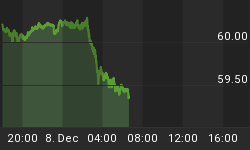A real time recession indicator constructed from a composite of leading economic indicators, high frequency economic data, and SP500 pricing models continues to suggest that the US economy is NOT in recession.
This composite indicator utilizes data from the Economic Cycle Research Institute (WLI, LEI), the Philadelphia Federal Reserve (Aruoba-Diebold-Scotti Business Conditions Index), and the Chicago Federal Reserve (Chicago Fed National Activity Index). Furthermore, two SP500 price models (one proprietary and one not) are monitored. The data from the regional Federal Reserves and the ECRI continue to firm to the positive. In addition, the priced based models are far from confirming a recession. Although not in recession territory, growth isn't exactly robust either as most measures are hugging the zero lines.
Figure 1 is a weekly chart of the SP500 with the composite Real Time Recession Indicator in the lower panel. With the indicator below the midline, the US economy is not in recession. Past and recent signals are shown. The 2011 signal turned out to be false and coincides with the launch of Operation Twist.
Figure 1. SP500/ weekly
![]() Larger Image
Larger Image
Figure 2 is a weekly chart of the SP500 with the ECRI's LEI laid over the price bars. For the most part and prior to QE2 and Operation Twist, LEI and price were highly correlated. For example, LEI peaked when price peaked. Now focus on the right hand side of the chart. Note how QE2 and Operation Twist produced successively weaker bounces in economic activity than QE1, and ECRI's LEI is diverging negatively from price. Based upon this, it would seem that any QE would have to be very meaningful in scope of time (i.e., open ended) and in quantity (i.e., close to a trillion dollar?) to produce a meaningful economic bounce.
Figure 2. SP500/ weekly
![]() Larger Image
Larger Image
















